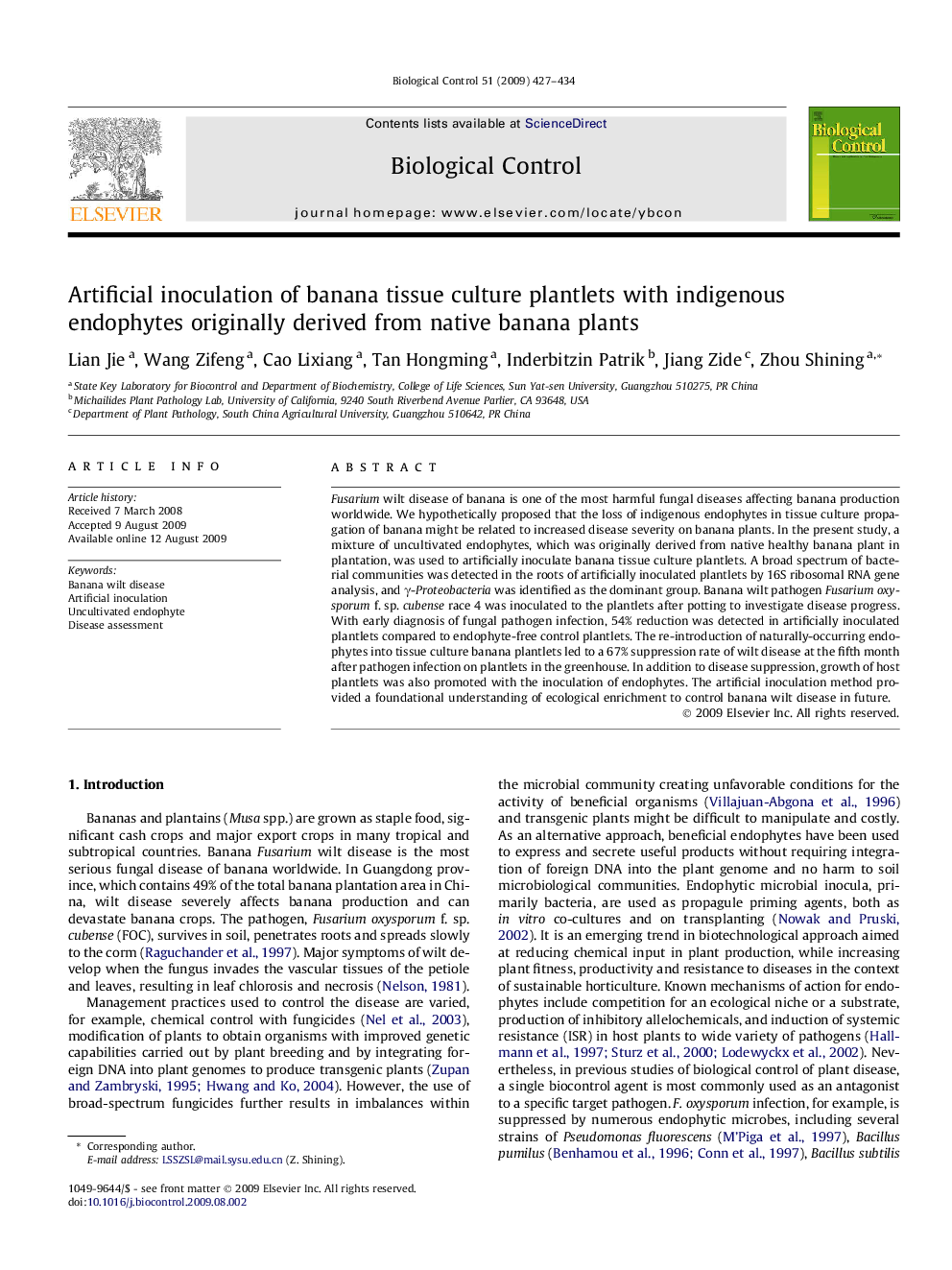| Article ID | Journal | Published Year | Pages | File Type |
|---|---|---|---|---|
| 4504545 | Biological Control | 2009 | 8 Pages |
Fusarium wilt disease of banana is one of the most harmful fungal diseases affecting banana production worldwide. We hypothetically proposed that the loss of indigenous endophytes in tissue culture propagation of banana might be related to increased disease severity on banana plants. In the present study, a mixture of uncultivated endophytes, which was originally derived from native healthy banana plant in plantation, was used to artificially inoculate banana tissue culture plantlets. A broad spectrum of bacterial communities was detected in the roots of artificially inoculated plantlets by 16S ribosomal RNA gene analysis, and γ-Proteobacteria was identified as the dominant group. Banana wilt pathogen Fusarium oxysporum f. sp. cubense race 4 was inoculated to the plantlets after potting to investigate disease progress. With early diagnosis of fungal pathogen infection, 54% reduction was detected in artificially inoculated plantlets compared to endophyte-free control plantlets. The re-introduction of naturally-occurring endophytes into tissue culture banana plantlets led to a 67% suppression rate of wilt disease at the fifth month after pathogen infection on plantlets in the greenhouse. In addition to disease suppression, growth of host plantlets was also promoted with the inoculation of endophytes. The artificial inoculation method provided a foundational understanding of ecological enrichment to control banana wilt disease in future.
